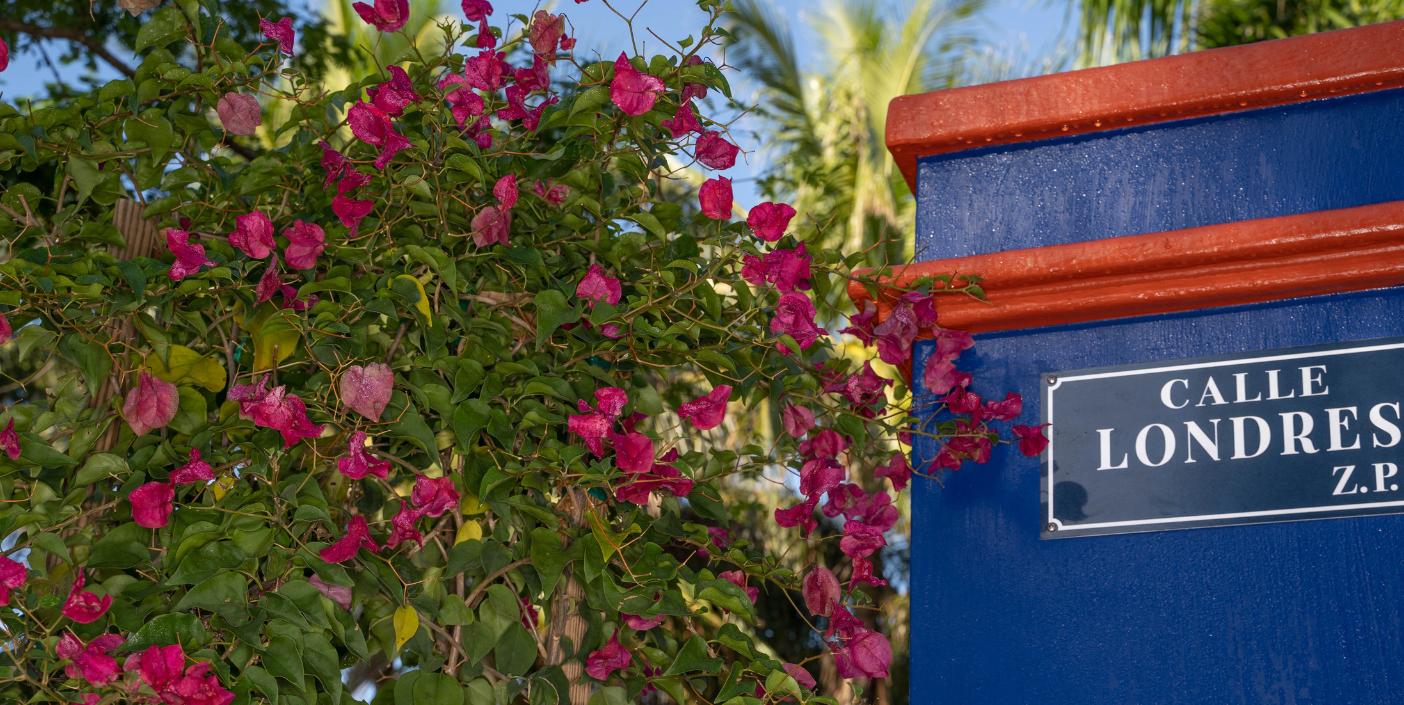
Nearly every plant in the Frida and Her Garden exhibition helps tell a story. The majority are species that the famed Mexican artist incorporated into her paintings, planted in her garden, or are Mexican in origin. A few offer a nod to her husband, muralist Diego Rivera.
Here are some examples of the plants featured in the exhibition and the significance behind them:
 Thaumatophyllum bipinnatifidum (formerly Philodendron selloum): Kahlo featured this common Mexican garden plant, with its enormous showy leaves, in Portrait of Luther Burbank (1931). This abstract work featured the American horticulturist, famed for his role in developing the science of plant breeding. Kahlo depicts Burbank as a hybrid himself, half man and half tree.
Thaumatophyllum bipinnatifidum (formerly Philodendron selloum): Kahlo featured this common Mexican garden plant, with its enormous showy leaves, in Portrait of Luther Burbank (1931). This abstract work featured the American horticulturist, famed for his role in developing the science of plant breeding. Kahlo depicts Burbank as a hybrid himself, half man and half tree.
Where to see it: It’s the centerpiece of the bed immediately beyond the La Casa Azul façade.
 Bougainvillea ‘Barbara Karst’: Bougainvillea brighten the South Florida landscape, and they also harken Kahlo’s famous floral headdresses, such as the one seen in this photograph by artist Nickolas Muray.
Bougainvillea ‘Barbara Karst’: Bougainvillea brighten the South Florida landscape, and they also harken Kahlo’s famous floral headdresses, such as the one seen in this photograph by artist Nickolas Muray.
Where to see it: in pots throughout the exhibition.
 Sunflower (Helianthus varieties): One of Kahlo’s final paintings was a self-portrait depicting herself as a wilting sunflower. Painted in 1954, the year of her death, the work was never completed.
Sunflower (Helianthus varieties): One of Kahlo’s final paintings was a self-portrait depicting herself as a wilting sunflower. Painted in 1954, the year of her death, the work was never completed.
Where to find it: directly in front of the replica of Kahlo’s easel.
 Calla lily (Zantedeschia aethiopica): Calla lilies were among Diego Rivera’s favorite botanical subjects. Some famous examples include The Flower Seller (1942) and Nude with Calla Lilies (1944). Rivera gravitated to the white variety; ours appear in a variety of colors.
Calla lily (Zantedeschia aethiopica): Calla lilies were among Diego Rivera’s favorite botanical subjects. Some famous examples include The Flower Seller (1942) and Nude with Calla Lilies (1944). Rivera gravitated to the white variety; ours appear in a variety of colors.
Where to see them: throughout the exhibition.
 Fencepost Cactus (Laphocereus marginatus): Mexicans traditionally use these towering cacti as “living fences” around yards, gardens, and livestock pens. A row of them form a backdrop in this famous photo of Kahlo.
Fencepost Cactus (Laphocereus marginatus): Mexicans traditionally use these towering cacti as “living fences” around yards, gardens, and livestock pens. A row of them form a backdrop in this famous photo of Kahlo.
Where to see it: in front of the sign where Frida’s Garden continues.
 Variegated snake plant (Sansevieria trifasciata var. laurentii): The variegated snake plant is a common house plant, much beloved for its forgiving nature and tolerance of wide-ranging conditions.
Variegated snake plant (Sansevieria trifasciata var. laurentii): The variegated snake plant is a common house plant, much beloved for its forgiving nature and tolerance of wide-ranging conditions.
Where to see it: in pots throughout the exhibition.
These are just a few examples of what the exhibition’s plants can tell you about Kahlo, Rivera, and the country they loved. The exhibition is staffed from 10am – 4pm (later during evening events such as Sunset Wednesdays), and guides are happy to tell you more tales!
This post supports this year’s theme, Mexico: A Celebration of Plants & Culture, which highlights one of the most biodiverse places on Earth and celebrates cultural connections to the natural world.

 About the Author
About the Author
Jennifer Reed is the Garden’s Editorial Director and a longtime Southwest Florida journalist.

